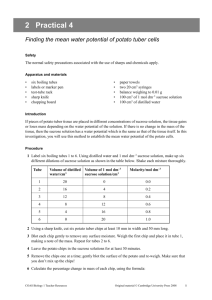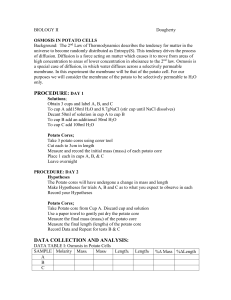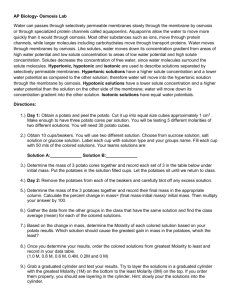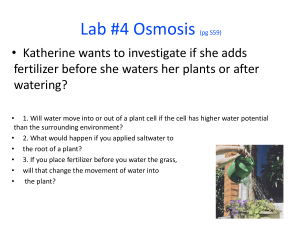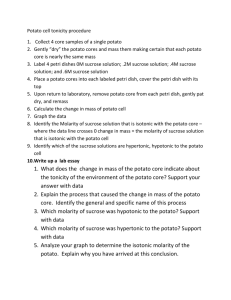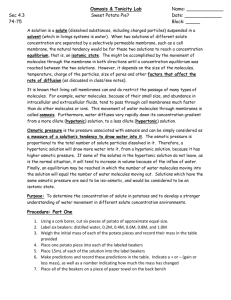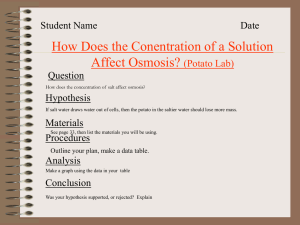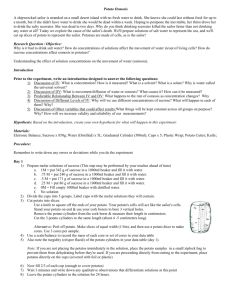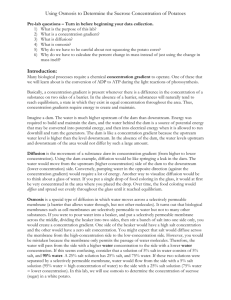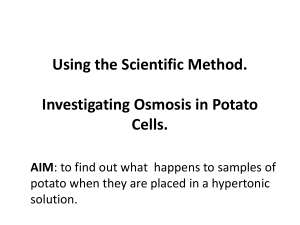Osmosis & Water Potential: Potato Experiment Presentation
advertisement
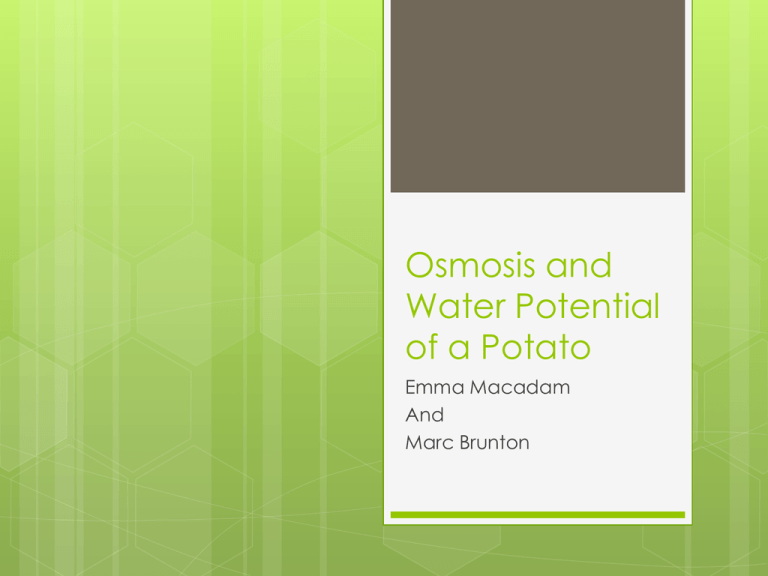
Osmosis and Water Potential of a Potato Emma Macadam And Marc Brunton Hypothesis Our hypothesis is that the potato will have the highest water potential than the butternut squash, sweet potato, and the apple, assuming it has the lowest sucrose concentration. We predict the apple will have the lowest water potential, assuming it has the highest sucrose concentration. The Experiment Our experiment tested the water potential of a potato. There were six different sucrose solutions, with varying molarities. By calculating the change in mass, we predicted the molarities of the various solutions. The larger the increase, the lower the molarity, and vice versa. This is because water flows from low concentration to high concentration. Solution Type Blue Solution Orange Solution Yellow Solution Red Solution Green Solution Purple Solution Original mass of the potato (g) 5.3 4.7 4.8 4.8 4.4 5.4 New mass of the potato (g) 3.42 5.13 4.96 3.04 3.64 3.68 8% increase 3% increase 37% decreas e 17% decreas e 32% decreas e Data Table Percent 35% change decreas in mass e of potato Molarity of the Solutions Orange- 0.0M Yellow- 0.2M Green- 0.4M Purple- 0.6M Blue- 0.8M Red- 1.0M Orange had the highest increase, and therefore the lowest molarity. Red had the highest amount of decrease, and therefore the highest molarity. Graph of the data Color Percent Change 0 0.08 Yellow 0.2 0.03 Green 0.4 -0.17 Purple 0.6 -0.32 Blue 0.8 -0.35 Red 1 -0.37 Percent Change in Mass of Potato Percent Change Orange Molarity 0.15 0.1 0.05 0 -0.05 0 -0.1 -0.15 -0.2 -0.25 -0.3 -0.35 -0.4 0.2 0.4 0.6 Molarity 0.8 1 1.2 Estimated Molarity of the potato We estimate the molarity of the potato to be around 0.3M. This is because at 0.4M the mass decreased, but at 0.2M the mass increased. The middle value is a good estimate of what the molarity of the potato might be. Water potential of the potato Water Potential= Pressure Potential + Solute Potential Pressure Potential=0 Solute Potential= -iCRT i-ionization constant, C=Molarity, Gas Constant (0.08321), T= Tempurature (Kelvin) -(1)(0.3)(0.08321)(273+21)= -7.34 Conclusion The solution went from an area of low concentration to an area of high concentration, causing the potato to shrink in a higher concentration solution, and expand in a lower concentration solution. The Potato had a relatively high water potential, because it did not have to be in a very high concentration of sucrose before water started to leave it. Xylem Tissue The Xylem tissue’s main function is to transport water and nutrients from the roots, throughout the plant. Water moves upwards from the roots to the leaves, because the water potential is more positive in the leaves than the roots. This allows water to flow from an area of low concentration to an area of high concentration.
